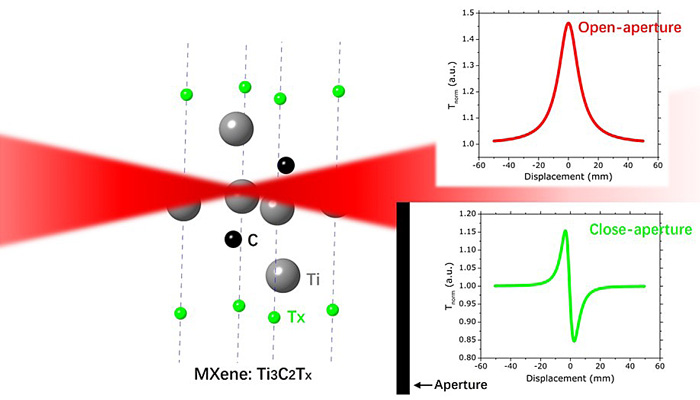
hotline:
17715390137
Tel/Wechat:
18101240246 (Technology)
0512-68565571
Email:mxenes@163.com (Sales Engineer)bkxc.bonnie@gmail.com
Scan the code to follow or search the official account on WeChat:
2D Materials Fronrier After paying attention,
click on the lower right corner to contact us,
Enter enterprise WeChat.
Professional Services Online

Mxene: A New Kind of Nonlinear Optical 2D Material
Two-dimensional materials have a variety of novel physical and chemical properties that are different from bulk materials, and perfectly meet the increasing demand for miniaturization, integration, high efficiency, and multifunctional devices. Among them, two-dimensional non-linear optical materials are indispensable and important elements for nano-devices such as non-linear photonics, plasmon, and optical-electrical / magnetic / acoustic mutual control. Wide attention from field researchers. As a pioneering two-dimensional material, Graphene and its related carbon-based materials, such as carbon nanotubes and fullerenes, first entered people‘s field of vision and achieved many dazzling achievements. However, due to the intrinsic zero-bandgap structure of graphene, its application in the field of optoelectronics is limited to a certain extent. Researchers have gradually extended their goals to other two-dimensional materials, such as new two-dimensional materials such as black phosphorus, transition metal disulfides (TMDCs), and topological insulators, and have also obtained many exciting results. Nonetheless, the preparation technology of these materials is still immature, people lack systematic research on the properties of materials, and new materials are constantly emerging, which materials will lead the new two-dimensional nonlinear optical materials in the future is still an open Proposition.
Text 1.jpg

| Reminder: Beijing Beike New Material Technology Co., Ltd. supplies products only for scientific research, not for humans |
| All rights reserved © 2019 beijing beike new material Technology Co., Ltd 京ICP备16054715-2号 |